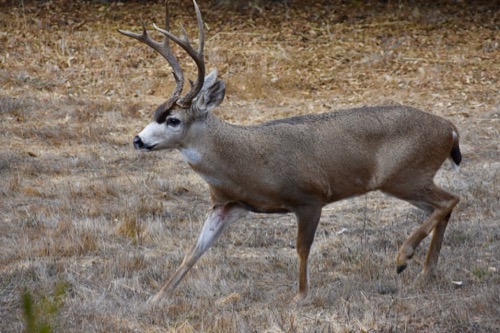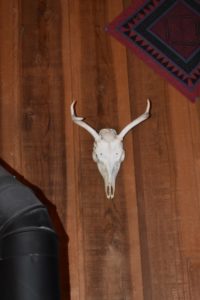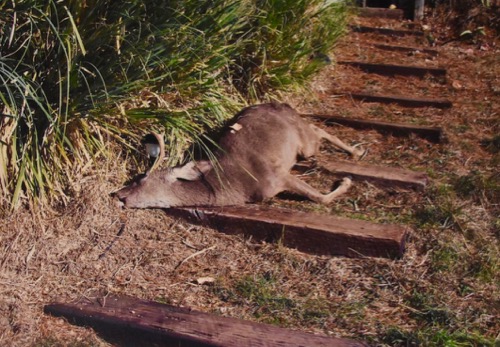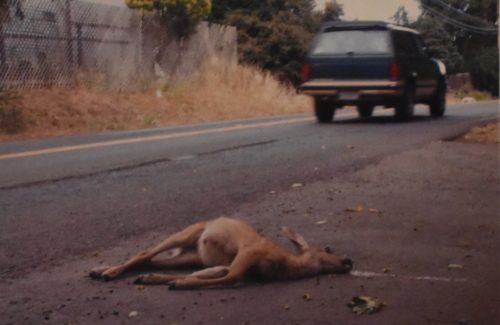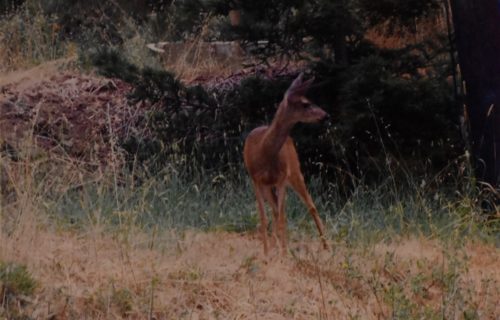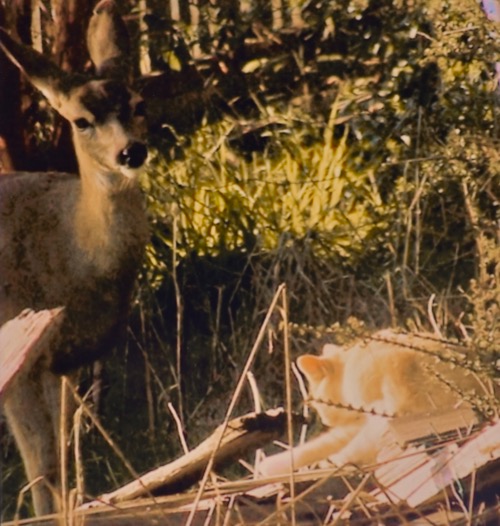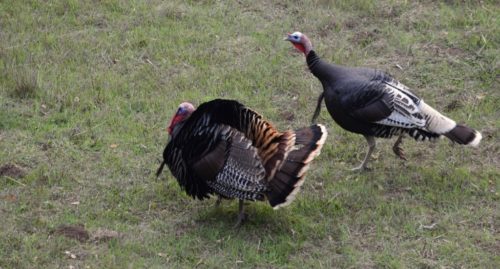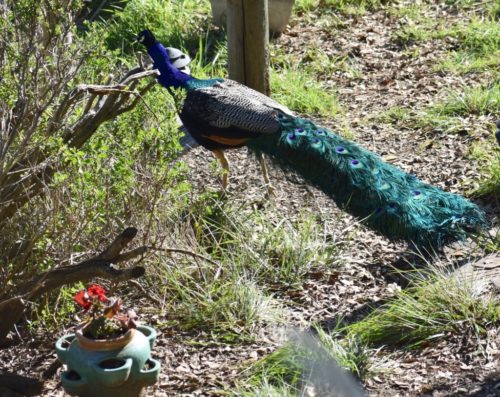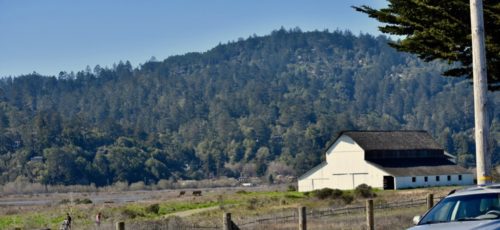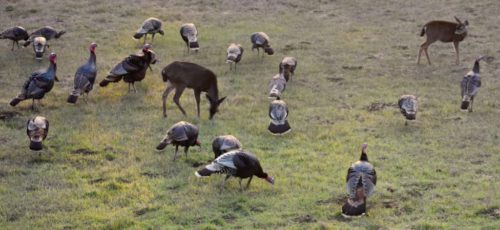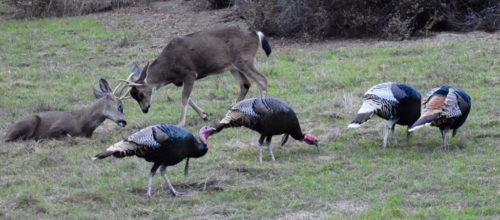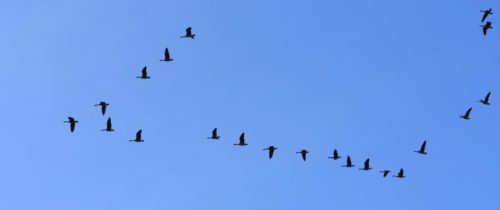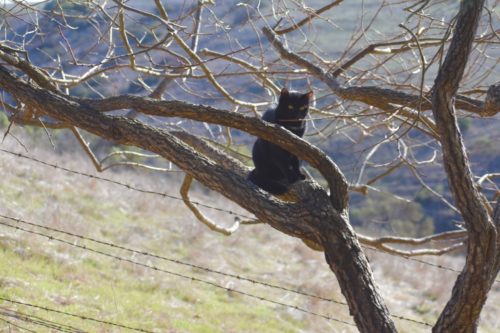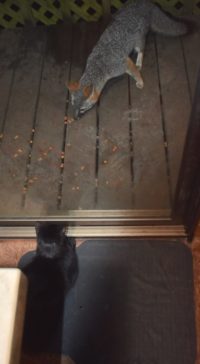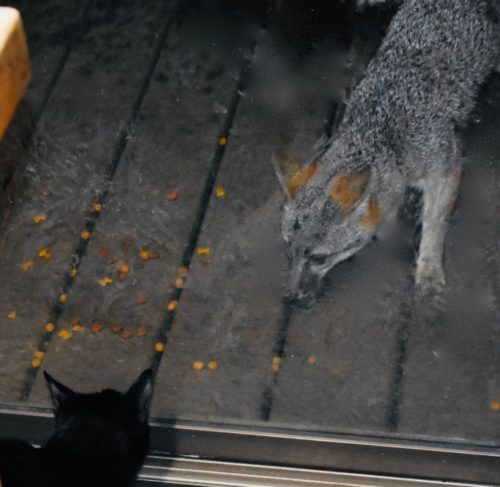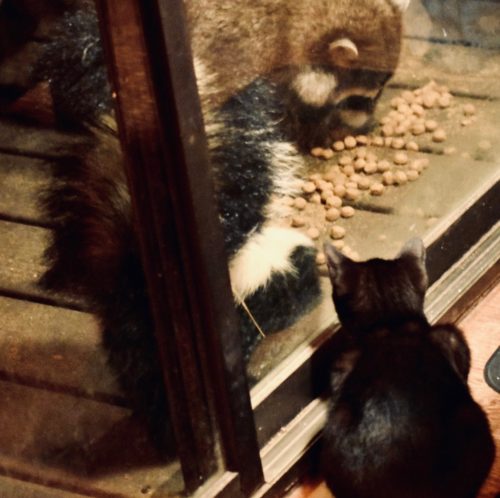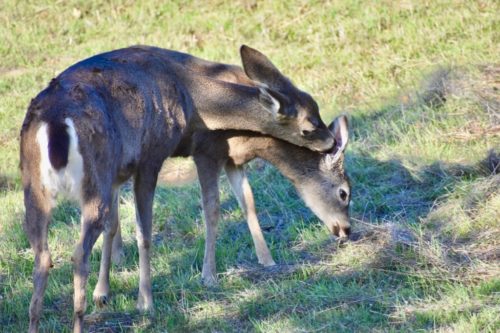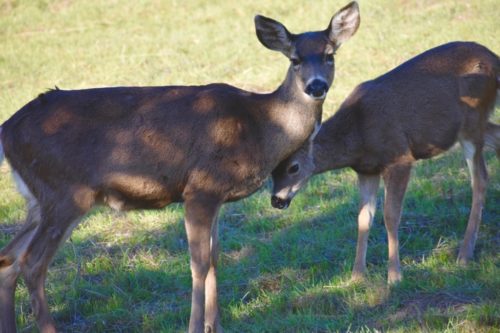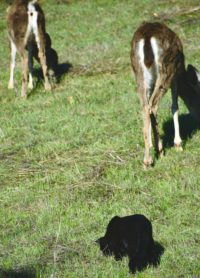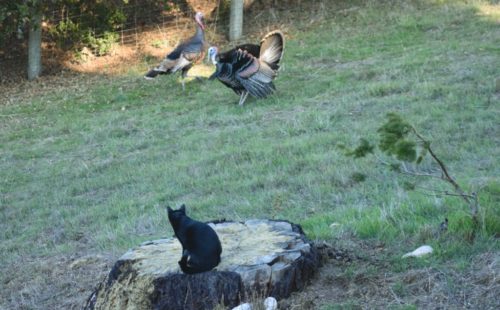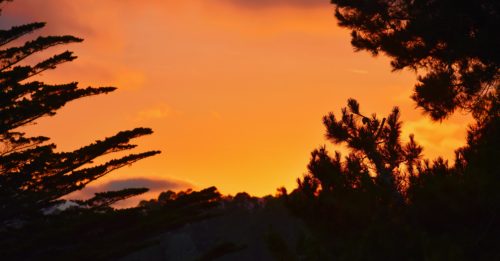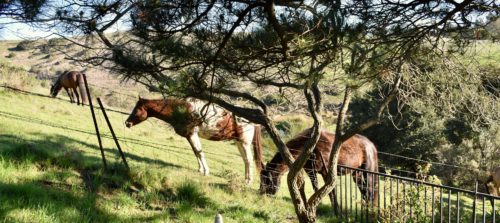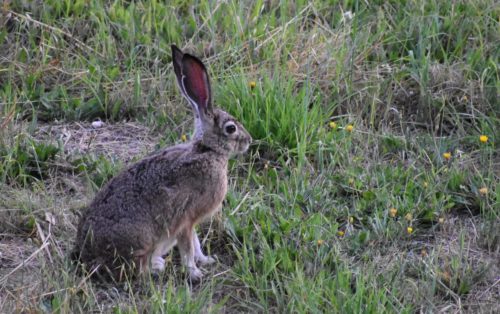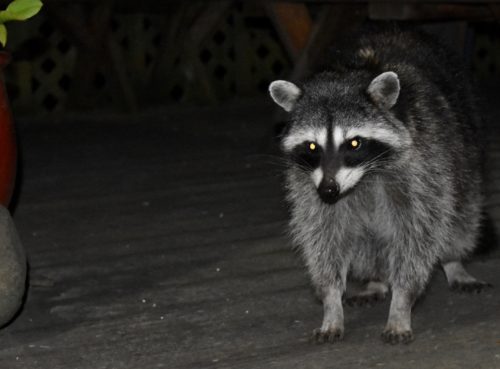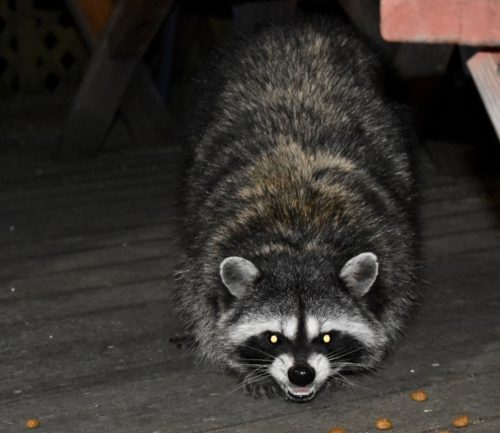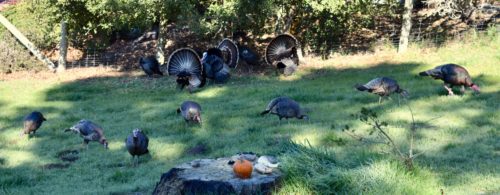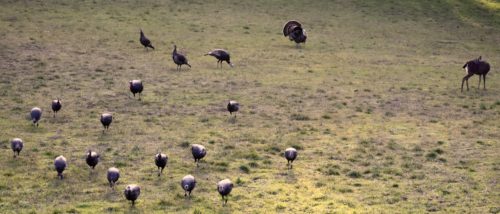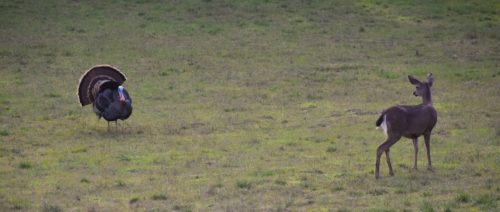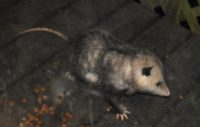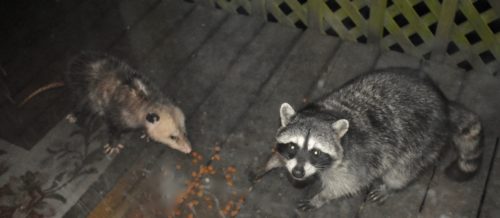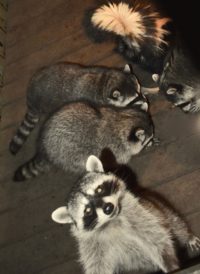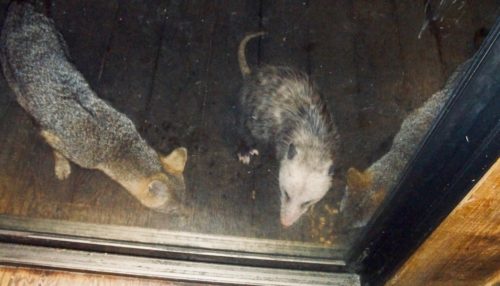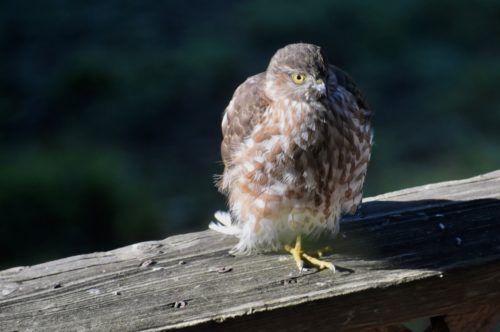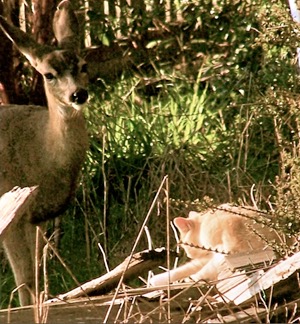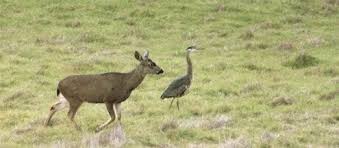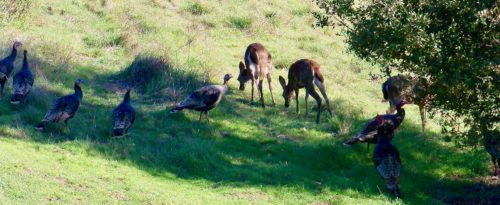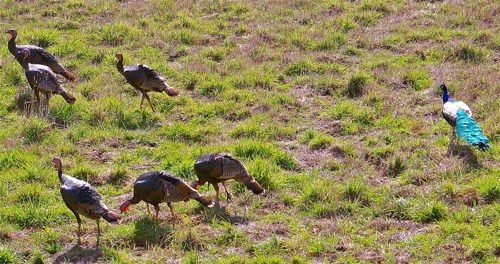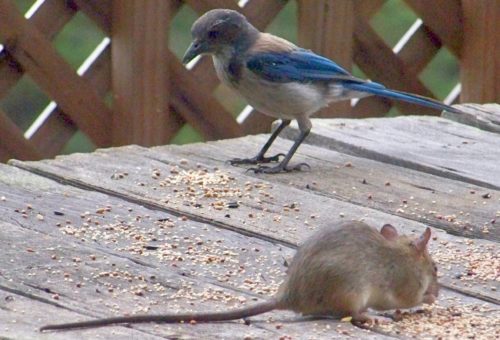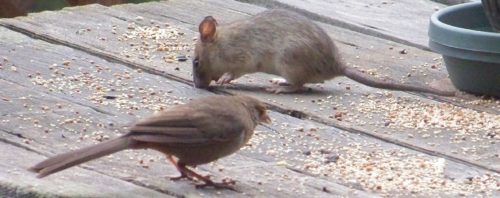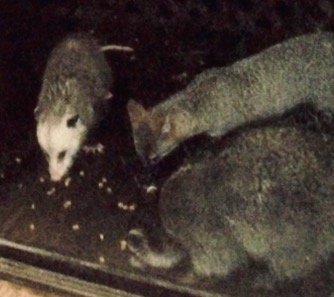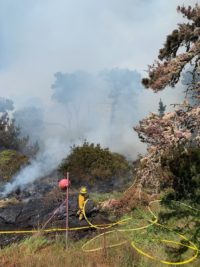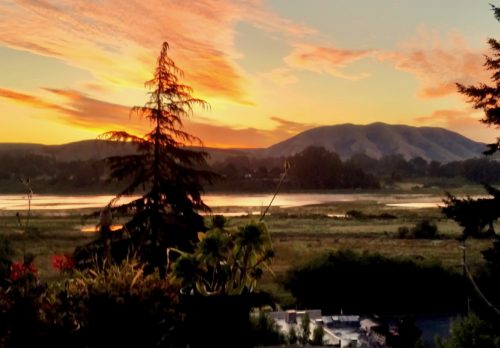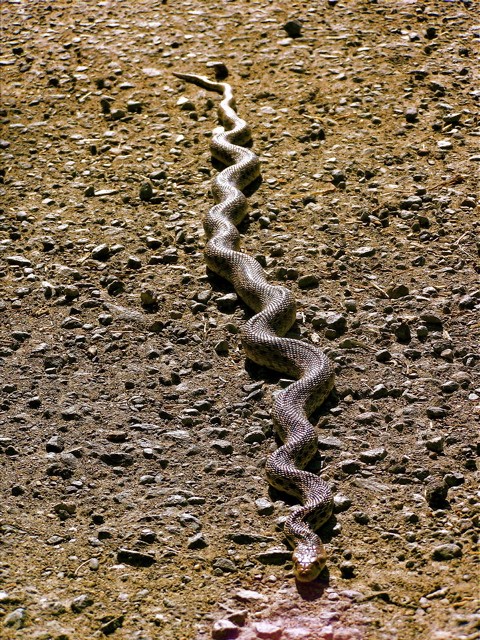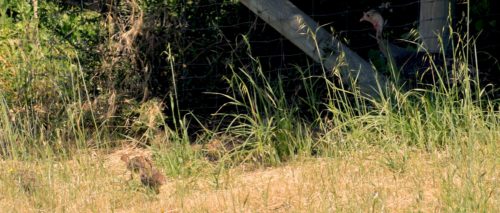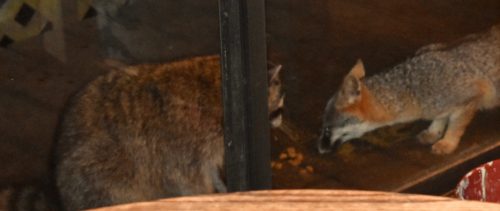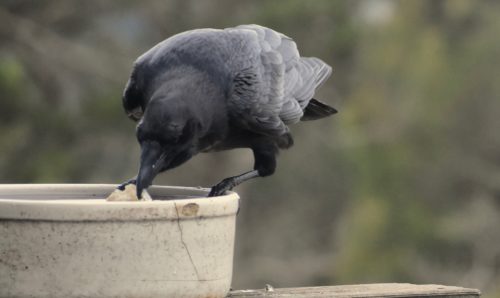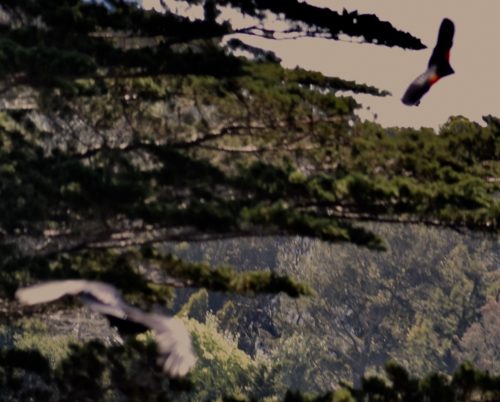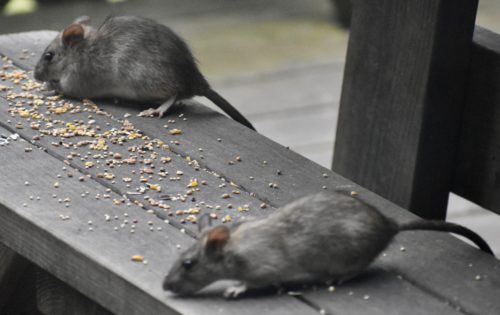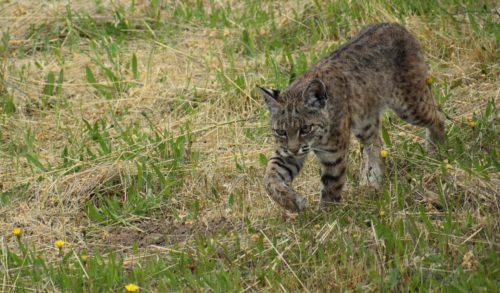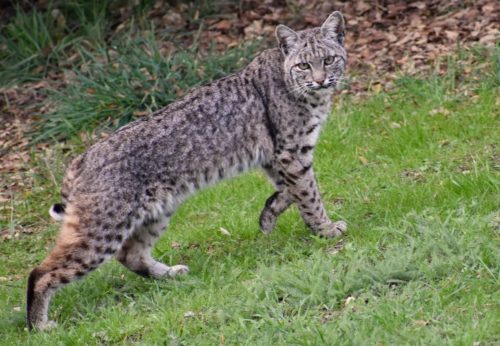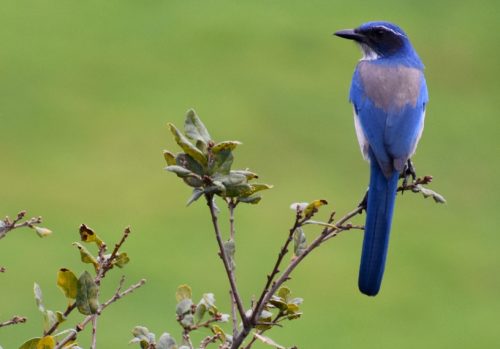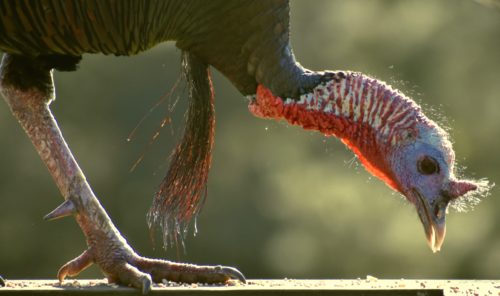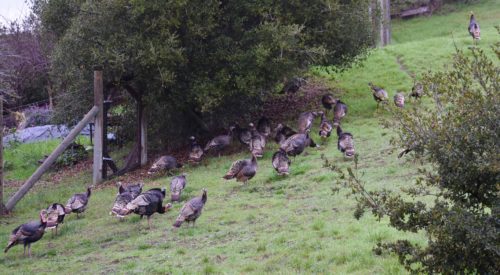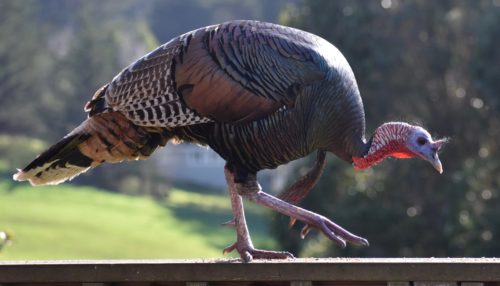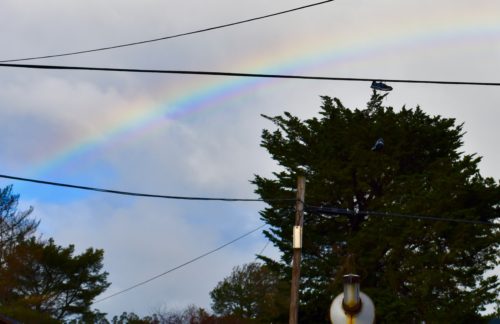Entries tagged with “wild turkeys”.
Did you find what you wanted?
Sat 10 Dec 2022
Posted by DavidMitchell under History, Wildlife
Comments Off on Let’s talk turkey
Caveat lectorem: When readers submit comments, they are asked if they want to receive an email alert with a link to new postings on this blog. A number of people have said they do. Thank you. The link is created the moment a posting goes online. Readers who find their way here through that link can see an updated version by simply clicking on the headline above the posting.
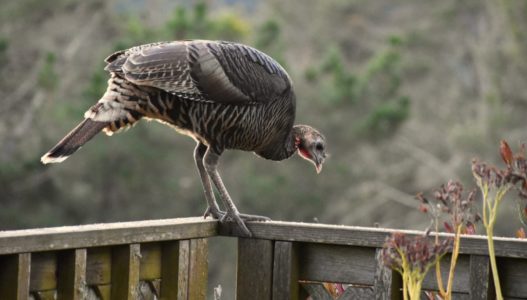
Like other wild birds, turkeys regularly show up on the deck of Mitchell cabin. We put out birdseed for smaller birds, and the turkeys try to horn in on the meal. The trouble is the turkeys will gobble it all up if they can, and they scare off the other birds. Perhaps worst of all, they leave behind huge droppings.
Benjamin Franklin disapproved of bald eagles being named our national bird, and there has long been a myth that he wanted the turkey to replace the bald eagle as our national bird. In fact, he merely compared the eagle to a turkey to denigrate the eagle. The myth grew out of a letter Franklin wrote his daughter in which he complained that the “bald eagle…is a bird of bad moral character. He does not get his living honestly…[He] is too lazy to fish for himself.”
Even the turkey, Franklin wrote, is “a much more respectable bird, and withal a true original native of America…He is besides — though a little vain and silly — a bird of courage.”

I’m glad that no one actually proposed making turkeys our national bird because Lynn and I are forever having to shoo them off our deck.
Despite our shooing, turkeys only momentarily stop showing up.
Wild turkeys are native to the Midwest and East Coast, as well as Canada and Mexico — but not to California. They got here in the 1950s when the state Department of Fish and Game, as it was then named, released some in the Napa Valley as prey for hunters.
In 1988, a few from the Napa Valley flock were transported to Loma Alta Ranch overlooking the San Geronimo Valley. Before long that small flock expanded to the valley floor and by the year 2000 had spread throughout West Marin.

The view from Mitchell cabin.
They can also be a nuisance in other ways. In an extreme case, a turkey in February 2005 blacked out the town of Tomales.
Turkeys are not great flyers, and turkeys in Tomales had taken to gliding off a steep slope to get across Highway 1.
On one occasion, a turkey misjudged the height of some powerlines and flew into them. Two 12,000-volt lines slapped together, causing an explosion with a bright flash.
The explosion surprisingly did not kill the turkey. It fell to the ground and started wandering around in dazed circles. Resident Walter Earle, who saw the flash, immediately called the county fire department to report, “Some turkey just took out the powerlines.” Fire Capt. Tom Nunes later said he at first assumed Earle was talking about a drunk driver. The blackout lasted four hours.
Wed 29 Jun 2022
Posted by DavidMitchell under agriculture, Wildlife
Comments Off on Deer tales
Caveat lectorem: When readers submit comments, they are asked if they want to receive an email alert with a link to new postings on this blog. A number of people have said they do. Thank you. The link is created the moment a posting goes online. Readers who find their way here through that link can see an updated version by simply clicking on the headline above the posting.
Deer neighbors
This week we’ll take a look at the deerest creatures around Mitchell cabin,

A blacktail buck outside Mitchell cabin.
California’s Department of Fish and Wildlife has estimated that well over half the roughly 560,000 deer in California are Columbian blacktails, the deer native to West Marin and the San Francisco Bay Area.
For years many people believed (and some websites still say) that blacktails are a subspecies of mule deer, a species found from the Northwest to the deserts of the Southwest and as far east as the Dakotas. DNA tests, however, have now found mule deer to be a hybrid of female whitetail deer and blacktail bucks.
Whitetails first appeared on the East Coast about 3.5 million years ago. DNA evidence suggests they spread south and then west, arriving in California about 1.5 million years ago.
In moving up the coast, whitetails evolved into blacktails, which resemble them in appearance and temperament. Blacktails eventually extended their range eastward, meeting up with more whitetails coming from the east.
A buck shows up to die

A deer skull hangs on a wall behind our woodstove.
Guests seeing this skull often wrongly assume I must have shot the critter and hung up its head as a trophy. In fact, I am not a hunter and don’t like the idea of killing wild animals for pleasure.
In this case, I did not seek out the buck but rather he sought out our front steps to breathe his last.

One morning when I started down my front steps en route to get The San Francisco Chronicle, I found a three-year-old blacktail buck lying dead on the ground just outside my gate. There were no signs of trauma on the deer although there were small lesions in his mouth. It turned out the buck had died of a necrobacillosis infection.

I dragged the body to the edge of my field (at left), and buzzards (AKA vultures) lined up on fence posts to dine. Maggots too soon began devouring the corpse.
Road kill

Awhile back, I was driving on Highway 1 near home when I spotted a dead fawn beside the roadway.

An upset doe kept trying to cross the highway to check on her fawn. But every time she started down to the roadway, a vehicle (such as in the upper photo) forced her to retreat back up the shoulder. For more than half an hour, she tried unsuccessfully to reach her dead offspring.
Gentle creatures

A curious doe watches a cat cleaning itself outside our kitchen door.

Deer and wild turkeys intermingle while foraging in our field, both species obviously realizing the other is a gentle neighbor.
Mon 1 Mar 2021
Posted by DavidMitchell under Uncategorized
Comments Off on Turkeys, a peacock, and Black Lives Matter
All of the world’s domestic turkeys “come from the wild turkey Meleagris gallopavo, a species that is native only to the Americas,” notes the Cornell Lab website All About Birds. “In the 1500s, Spanish traders brought some that had been domesticated by indigenous Americans to Europe and Asia. The bird reportedly got its common name because it reached European tables through shipping routes that passed through Turkey.”

Wild turkeys are native to every US state except Alaska but are not evenly distributed, so in the 1950s, the State Department of Fish and Game released a bunch in Napa County because of their appeal to some hunters. In 1988, Fish and Game took a group of turkeys from the Napa flock and released them on Loma Alta Ridge between Big Rock and Woodacre. All the wild turkeys we see in West Marin are descended from that small group.

Wild-turkey hunting is not all that common, so the West Marin group keeps growing, and flocks are now found throughout this area. This 25-bird flock is pecking for bugs and seeds on the hillside below Mitchell cabin.

Peacocks, on the other hand, are native to Asia and not the United States; however, some have been imported and released. It was in the news awhile back that some had been released in Texas. As it happens, a few have reached California one way or another, and a lone peacock now lives not far from Mitchell cabin.
For company, the peacock hangs out with the local wild turkeys although it sometimes wanders off on its own. Here it wandered through our garden last weekend. For a moment, there was pandemonium. The peacock and our cat Newy were both startled when they spotted each other only a few feet apart. Both then fled when they saw running toward them a fawn that, in turn, had been startled when it spotted me.

A Black Lives Matter demonstration came off peacefully in Point Reyes Station Saturday on the Wells Fargo Bank corner. A week earlier, some onlookers from out of town  and wearing Trump’s MAGA caps had yelled insults at a previous group and thrown a water cup at them.

Such demonstrations have been held nationwide in recent months to protest a pattern of unwarranted killings of black people by racist officers. Some people interpret the BLM slogan “defund the police” (seen above) to mean “eliminate the police.” In fact, it was coined to mean reduce police department budgets and distribute the saving among social-service programs.
(Addendum: One nearby example occurred the day after this posting first went online. “The Oakland City Council voted unanimously Tuesday to direct staff to design a pilot program to dispatch counselors and paramedics from the city’s fire department to mental-health crises instead of police officers,” The San Francisco Chronicle reported March 3.)

The Giacomini wetlands between C Street and Papermill Creek drew a few visitors last weekend but managed to remain a tranquil place for a stroll. (Photo by Lynn Axelrod Mitchell)
With its wild turkeys and anti-racism demonstrations, Point Reyes Station is staying busy even as the rest of this stricken country slows down.
Sat 19 Dec 2020
Posted by DavidMitchell under Uncategorized
Comments Off on Species intermingling
Located on a grassy hillside, Mitchell cabin is constantly in the midst of various wildlife: at least 40 species and subspecies of birds, along with various snakes, lizards, salamanders, frogs, deer, skunks, coyotes, raccoons, foxes, gophers, roof rats, field mice, squirrels, cottontails, jack rabbits (which are actually hares), bobcats, and the occasional badger.
I’m always impressed by how often the different species manage to get along with each other.

A flock of wild turkeys casually wander past a couple of grazing deer.

The turkeys, in fact, are so indifferent to the deer that when a young buck challenges a weary companion, they don’t even notice.

And even when the two bucks start actually sparring, the turkeys just continue their hunting and pecking.

A flock of Canada geese fly overhead honking as they go.

Add a domestic cat to this mix and the wildlife come to resemble zoo animals. Here Newy, the stray cat we adopted last summer, climbs a persimmon tree to take it all in. Last week’s posting showed her in the grass interacting with deer and wild turkeys.

Many of Newy’s wildlife displays, however, present themselves at our kitchen door. Here she studies a gray fox eating dog kibble left behind by raccoons.

The fox soon spots Newy but just gives her a quick glance.

Newy was traveling with several raccoons when she first showed up in late July. A veterinarian, who later spayed her and trimmed her claws, estimated her age as five to six months. While she enjoys keeping an eye on her raccoon friends, the unfamiliar skunks particularly fascinate her. Like the fox, a couple of skunks regularly show up to enjoy the last of the raccoons’ dinner. For her, the scene is all part of the zoo in which she finds herself now living
Sat 12 Dec 2020
Posted by DavidMitchell under Uncategorized
1 Comment
This posting is a bit late, but I’ve been having various problems with the computer program that loads the photos. Finally tonight a friend in Glenview, Illinois, over the phone helped me solve the problems, so now we’re off and running again.
This hurry-up posting, now that I can get back online, is simply a random mix of animal photos shot this past week, political cartoons, and religious humor that relatives have sent me.

A bonding experience. A blacktail doe near Mitchell cabin cleans her fawn’s ear last Monday. (Photo by Lynn Axelrod Mitchell)

The bonding is complete as the fawn responds by nuzzling its mother. (Photo by Lynn Axelrod Mitchell)

The stray cat we have taken in, Newy, joins a couple of deer grazing in our field last Sunday. Despite their close proximity, none of them seem at all nervous. (Photo by Lynn Axelrod Mitchell)

Newy, however, is a bit nervous as wild turkeys stroll past the cabin right behind the deer. (Photo by Lynn Axelrod Mitchell)

Goodnight, West Marin.

And now for some religious humor that my cousin Leck Mitchell and his wife Pat sent me from Colorado.
A Sunday school teacher asked her class, “What was Jesus’ mother’s name?” One child answered, “Mary.”
The teacher then asked, “Who knows what Jesus’ father’s name was?”
A little kid said, “Verge.”
Confused, the teacher asked, “Where did you get that?”
The kid said, “Well, you know, they are always talking about Verge n’ Mary.”
_________
I had been teaching my three-year old daughter, Caitlin, the Lord’s Prayer for several evenings at bedtime. She would repeat after me the lines from the prayer.
Finally, she decided to go solo.I listened with pride as she carefully enunciated each word, right up to the end of the prayer:
“Lead us not into temptation,” she prayed, “but deliver us from email.”
_________
A Sunday school teacher asked her children as they were on the way to church service, “And why is it necessary to be quiet in church?”
One bright little girl replied, “Because people are sleeping.”
_________
Six-year-old Angie and her four-year-old brother Joel were sitting together in church. Joel giggled, sang, and talked outloud. Finally, his big sister had enough.
“You’re not supposed to talk outloud in church.”
“Why? Who’s going to stop me?” Joel asked.
Angie pointed to the back of the church and said, “See those two men
standing by the door? They’re hushers.”
__________

Sat 29 Feb 2020
Posted by DavidMitchell under West Marin nature, Wildlife
Comments Off on Animal tales of past developments
Caveat lectorem: When readers submit comments, they are asked if they want to receive an email alert with a link to new postings on this blog. A number of people have said they do. Thank you. The link is created the moment a posting goes online. Readers who find their way here through that link can see an updated version by simply clicking on the headline above the posting.

A coyote prowling, appropriately enough, near our coyote brush.
Coyotes were loudly howling Thursday night down at the foot of our cul de sac, creating the impression that something big was occurring. But as the Human-Wildlife Interactions journal explained in 2017, some mistakenly believe howling indicates that a group of coyotes has made a kill.
Coyotes howl for various reasons, and it is not likely because they have downed prey. Doing so would draw attention and might attract competing coyotes or other predators to their location, which is not something a hungry coyote would want to do. Coyotes howl and yip primarily to communicate with each other and establish territory. They may bark when they are defending a den or a kill. When coyotes are noisy, it often creates an exaggerated impression as to how many are on hand, largely because of the mixing of howls and yips.
There were no coyotes in West Marin for 40 years because of poisoning by sheep ranchers in northwest Marin and southern Sonoma counties. However, coyotes never disappeared from northern Sonoma County, and after the Nixon Administration banned the poison 10-80, they started spreading south and showed up here again in 1983. Since then coyotes have put an end to well over half the sheep ranching around Marshall, Tomales, Dillon Beach, and Valley Ford.

Three horses belonging to Point Reyes Arabian Adventures grazing outside our bedroom window last week.
By chance, I’ve recently listened several times to the Irish singer Van Morrison singing his 1989 composition Coney Island. It’s a pastoral song, which seems to contain an odd reference to cocaine: “Coney Island/ Coming down from Downpatrick/ Stopping off at St. John’s Point/ Out all day birdwatching/ And the crack was good.”
The reality, of course, is that he’s actually saying “craic,” which is a relatively new Irish word for fun or entertainment. It was borrowed in the last century from Ulster and Scotland, where it is pronounced crack.

Jackrabbit outside Mitchell cabin.
Coney Island in Van Morrison’s song does not refer to the amusement park in Brooklyn but to an island off County Sligo on the west coast of Ireland. And here’s where the story gets interesting. By most accounts, Dutch settlers named Ireland’s Coney Island after the many rabbits found there, konijn being a Dutch word for rabbit.
In the late 1700s, a merchant ship, Arethusa, regularly sailed between Sligo and New York City. After seeing an abundance of rabbits on a New York island, Peter O’Connor, the ship’s captain, named the place Coney Island because it reminded him of the Coney Island in Sligo Bay. During the 1920s and 1930s, Coney Island, New York, became a peninsula when a creek separating it from the rest of the city was filled in.

Raccoons are nightly visitors at Mitchell cabin, and I’ve come to see at least two sides of their personalities. They’re cute and able to beg for handouts, but they get skittish if I’m too close, quickly backing away when I open a door. And that’s probably for the best. Over the years, West Marin’s raccoons have prompted numerous calls to the Sheriff’s Office from people who thought they heard a prowler on their porch or roof at night.
Skunks drop by Mitchell cabin most nights, aggressively competing with the raccoons for food. They don’t spray but forcefully shoulder aside raccoons, even though the latter are noticeably bigger. I’m fascinated by all this and find it shameful how misguided county policy towards the two species was six decades ago. In 1958, Marin County supervisors began offering $1 bounties for skunk and raccoon tails. Fortunately after three weeks, the board reversed itself and dropped the offer, not because it was cruel but because young hunters with small-bore rifles were shattering too many windows.

Despite appearances, this raccoon is not trying to look fierce. It’s merely chomping down hard on a piece of kibble.
If raccoons show up on our deck wanting to be fed and realize we don’t know they’re out there, some will make us see them through our living room windows by standing on their hind legs atop a small bench or the woodbox and staring in at us. If we still don’t see them, they often create a squeal by dragging the pads of their front paws down the glass.

Wild turkeys are native to Canada, Mexico, the American Midwest, and the East Coast but not West Marin although they are now found throughout this area. In the 1950s, the state Department of Fish and Game released some wild turkeys in Napa County because they were so popular with hunters. In 1988, Fish and Game biologists took a few birds from the Napa flock and released them on Loma Alta Ridge between Big Rock and Woodacre.
Few people hunt the turkeys these days, flocks have increased in number and size, and the turkeys have become rather bold. In 2001, two Tom turkeys went after a couple of school children riding scooters in Tomales. The children had to escape on foot, leaving their scooters behind. Now who’s doing the hunting?
Wed 19 Feb 2020
Posted by DavidMitchell under Photography, West Marin nature, Wildlife
Comments Off on Some of the critters that have been visiting here of late
Caveat lectorem: When readers submit comments, they are asked if they want to receive an email alert with a link to new postings on this blog. A number of people have said they do. Thank you. The link is created the moment a posting goes online. Readers who find their way here through that link can see an updated version by simply clicking on the headline above the posting.
Needing a break from the political scene, I spent much of the past week photographing the critters that show up at Mitchell cabin.

Eleven blacktail deer grazing near Mitchell cabin last Saturday.

Following the deer up the hill were 21 wild turkeys.

Which led to an unusual stare-down.

For almost three years there’d been a dearth of possums around Mitchell cabin, but this past week two showed up on our deck after dark to nibble kibble.

Here a possum and raccoon dined together with no confrontations Sunday evening.

Raccoons, of course, are fairly comfortable around a number of other animals. Here four of them ate kibble alongside a skunk last fall.

And here a possum dined contentedly between two gray foxes just outside our kitchen door awhile back.

But the most integrated dining I have seen were this possum, fox, and raccoon, which I photographed together next to the kitchen door in 2011.

Monday morning Lynn woke me up so I could see this sharp-shinned hawk on the railing of our lower deck. The young hawk’s expression is mighty stern, and I fear it may be hunting the birds that show up on our upper deck to eat birdseed. (Photo by Lynn Axelrod Mitchell)
In short, not all wildlife live in harmony around here.
Tue 8 Oct 2019
Posted by DavidMitchell under West Marin nature, Wildlife
Comments Off on The charm of inter-species neighborliness
Caveat lectorem: When readers submit comments, they are asked if they want to receive an email alert with a link to new postings on this blog. A number of people have said they do. Thank you. The link is created the moment a posting goes online. Readers who find their way here through that link can see an updated version by simply clicking on the headline above the posting.
Some critters get along with their animal neighbors better than we might expect. Here’s a look at some inter-species neighborliness that’s caught my eye around Mitchell cabin.

A curious black-tailed doe watches a housecat clean itself.

A great blue heron goes gopher hunting near Mitchell cabin beside a grazing deer.

Seven wild turkeys hunt and peck alongside four black-tailed deer.

Wild turkeys, in fact, can often be found roaming around with other creatures, such as this lone peacock.

A scrub jay and a roof rat comfortably eat birdseed side by side on our picnic table.

Towhees are nowhere near as brazen as jays, but this one seems unconcerned about eating next to a roof rat.

Raccoons and skunks manage to dine together on our deck almost every night. As previously noted, raccoons, like dogs, identify each other by sniffing rear ends, including the backsides of skunks. The skunks often shoulder aside raccoons while competing for food but for some reason never spray them.

Another milepost in inter-species mingling: a possum, fox, and raccoon eat nose to nose to nose outside our kitchen door.
Mon 10 Jun 2019
Caveat lectorem: When readers submit comments, they are asked if they want to receive an email alert with a link to new postings on this blog. A number of people have said they do. Thank you. The link is created the moment a posting goes online. Readers who find their way here through that link can see an updated version by simply clicking on the headline above the posting.
It’s a strange week. At 2 p.m. today the thermometer at Mitchell cabin reached 101 degrees. Just after 3 p.m. I received a recorded telephone alert from the Sheriff’s Office saying there was a vegetation fire in West Marin but that so far no evacuations had been ordered. That was pretty vague, so I checked the fire department’s website which said: “Units are responding to the Drake Fire, a fire along Inverness Road near Limantour. Currently, the fire is approximately two acres in size with a slow rate of spread. One structure threatened.”

Sheriff’s photo of the Drake Fire.
No one seemed to know where “Inverness Road” is, but around 4 p.m. the fire department posted that the fire was in the National Seashore, was near Vision Road (not Inverness Road), was 50 percent contained, and had been held to less than three acres.
My wife Lynn, who’s the Point Reyes Disaster Council coordinator, urges everyone to sign up for alertmarin.org and nixle.com. The sheriff, via Alertmarin, has your home phone number, but you need to register your cell phones. You can hear about such things when you’re over the hill. Nixle will reach you on smartphones; she automatically received messages that way today, while I received the home robocall. And, she says, check the Marin County Fire twitter feed (you don’t need a twitter account). If you have no internet devices, tune in to KWMR on the radio for current information.
The Drake Fire, which was started by a tree limb falling on a powerline, follows a small fire Sunday on Mount Tamalpais near Panoramic Highway and Muir Woods Road. A PG&E transformer has been blamed for that fire.

Meanwhile, the Sand Fire in Yolo County has burned 2,200 acres and as of Monday afternoon is only 30 percent contained. Smoke from that fire drifted over West Marin Sunday, and made Monday’s sunrise particularly dramatic. (Photo by Linda Sturdivant of Inverness Park)

Snake handling. As I started up our road Saturday, I spotted a three-foot-long gopher snake stretched out across the pavement sunning itself. Lest another car run over it, I stopped, got out, and grabbed the snake around its neck just behind its head. Holding the tail out with my other hand, I carried it uphill to a grassy area and released it. The snake quickly slithered off. It was the second time in the last year or so I carried a snake off the road. This time I didn’t get at all nervous.

Different species cohabiting at Mitchell cabin. A flock of wild turkeys casually walks past a doe and young buck, which hardly notice.

A wild turkey hen guides her chicks along the edge of the field.

Dinner mates eating kibble. A raccoon and gray fox dined nose to nose on our deck last night, and neither seemed to worry the other.

A raven moistens bread in our birdbath to make it easier to swallow. God only knows where he found the bread, but then he’s always coming up with biscuits, cookies, birds eggs, and animal parts. Last week Lynn and I watched this raven kill a gopher in the grass and then tear it apart.

Protecting its nest, a red-winged blackbird (top right) repeatedly buzzes and pecks the raven (lower left) as it flies away.
“The population of the common raven is exploding across the American West, where it thrives on human refuse and roadkill,” The Los Angeles Times reported Sunday. “As the large, strutting predators piggyback on the spread of human civilization, they are expanding into territories where they have never been seen in such large numbers. This expansion has come at the expense of several threatened species, including the desert tortoise, whose soft-shelled hatchlings and juveniles have been devoured by the birds.” Scientists are now trying to reduce the number of desert ravens by using drones to spray oil on their nests.

Two roof rats gobble up birdseed before the birds eat it all.
In addition to all that excitement, Lynn in the past week managed to photograph some of our more exotic wildlife:

An egret walking beside our driveway last Thursday.

One of our local bobcats a week ago heading toward our garden, which it traversed without disturbing any flowers.
Wed 13 Feb 2019
Caveat lectorem: When readers submit comments, they are asked if they want to receive an email alert with a link to new postings on this blog. A number of people have said they do. Thank you. The link is created the moment a posting goes online. Readers who find their way here through that link can see an updated version by simply clicking on the headline above the posting.

A bobcat seen last week from a kitchen window. The cat has taken to showing up in the fields around Mitchell cabin, hunting gophers several times a month. Our fields have so many gophers that I’m always happy to see him.

A male American kestrel perching on the railing of our deck a couple of days ago as it likewise scanned the field below for prey. The falcon eats small birds, mice and insects.

A California scrub jay perched on an oak tree near our deck. These jays feed on insects, small animals, the eggs and young of other birds, grains, berries, and nuts. They’re among the most intelligent of all animals, according to some biologists.

Displaying her impressive spurs, a wild turkey walks along the railing of our deck pecking at seeds put out for other birds. The turkeys eat so much seed and leave such large droppings that they soon became unwelcome guests. During the day when they’re out and about, Lynn closes the gate where they walk onto the deck to discourage their getting used to it as their territory.

Turkeys march uphill near Mitchell cabin. We’ve had as many as 30 at a time in recent weeks. Wild turkeys have a Goth-like drabness when seen at a distance, but when they’re seen up close, they….

are dramatically colorful. With multi-hued feathers, a bright-red wattle, and jutting spurs, they probably could be rated among the more colorful local wild birds.
And while we’ve all heard that Ben Franklin wanted the turkey as our national symbol instead of the bald eagle, the Franklin Institute says the story’s “a myth.” It apparently grew out of a letter to his daughter in which Franklin wrote that in comparison to the bald eagle, the turkey is “a much more respectable Bird, and withal a true original Native of America…He is besides, though a little vain & silly, a Bird of Courage.”

A week of cold winds with several wet days has made downtown feel so bleak that I’d been thinking of filing a complaint with county government. However, as Lynn got out of our car in the Palace Market parking lot Monday, she called back to me that there was an impressive rainbow overhead. I then got out and saw the rainbow framed by overhead lines, dangling running shoes, a utility pole, treetops, and a chimney. Indeed I was impressed by the scene’s complexity.




